
Курсовая работа по РЗА / Терминалы / каталоги / 7SJ62xx_Catalog_SIP-2008_en
.pdf
SIPROTEC 4 7SJ62
Multifunction Protection Relay
LSP2299-afpen.eps
Fig. 5/97
SIPROTEC 7SJ62 multifunction protection relay
Description
The SIPROTEC 4 7SJ62 relays can be used for line protection of high and medium voltage networks with earthed (grounded), low-resistance earthed, isolated or compensated neutral point. With regard to motor protection, the SIPROTEC 4 7SJ62 is suitable for asynchronous machines of all sizes. The relay performs all functions of backup protection supplementary to transformer differential protection.
7SJ62 is featuring the "flexible protection functions". Up to 20 protection functions can be added according to individual requirements. Thus, for example, a rate- of-frequency-change protection or reverse power protection can be implemented.
The relay provides control of the circuitbreaker, further switching devices and automation functions. The integrated programmable logic (CFC) allows the user to implement their own functions, e. g. for the automation of switchgear (interlocking). The user is also allowed to generate user-defined messages.
The flexible communication interfaces are open for modern communication architectures with control systems.
5 Overcurrent Protection / 7SJ62
Function overview |
|
Protection functions |
|
• Time-overcurrent protection |
|
• Directional time-overcurrent protection |
|
• Sensitive dir. earth-fault detection |
|
• Displacement voltage |
|
• Intermittent earth-fault protection |
|
• High-impedance restricted earth fault |
|
• Inrush restraint |
|
• Motor protection |
|
– Undercurrent monitoring |
|
– Starting time supervision |
|
– Restart inhibit |
|
– Locked rotor |
|
– Load jam protection |
5 |
• Overload protection |
• Temperature monitoring
• Under-/overvoltage protection
• Under-/overfrequency protection
• Breaker failure protection
• Negative-sequence protection
• Phase-sequence monitoring
• Synchro-check
• Auto-reclosure
• Fault locator
• Lockout
Control functions/programmable logic
•Commands f. ctrl of CB and of isolators
•Control via keyboard, binary inputs, DIGSI 4 or SCADA system
•User-defined logic with CFC (e.g. interlocking)
Monitoring functions
•Operational measured values V, I, f
•Energy metering values Wp, Wq
•Circuit-breaker wear monitoring
•Slave pointer
•Trip circuit supervision
•Fuse failure monitor
•8 oscillographic fault records
•Motor statistics
Communication interfaces
•System interface
–IEC 60870-5-103/ IEC 61850
–PROFIBUS-FMS/-DP
–DNP 3.0/MODBUS RTU
•Service interface for DIGSI 4 (modem)
•Front interface for DIGSI 4
•Time synchronization via IRIG B/DCF77
Hardware
•4 current transformers
•3/4 voltage transformers
•8/11 binary inputs
•8/6 output relays
Siemens SIP · 2008 |
5/105 |
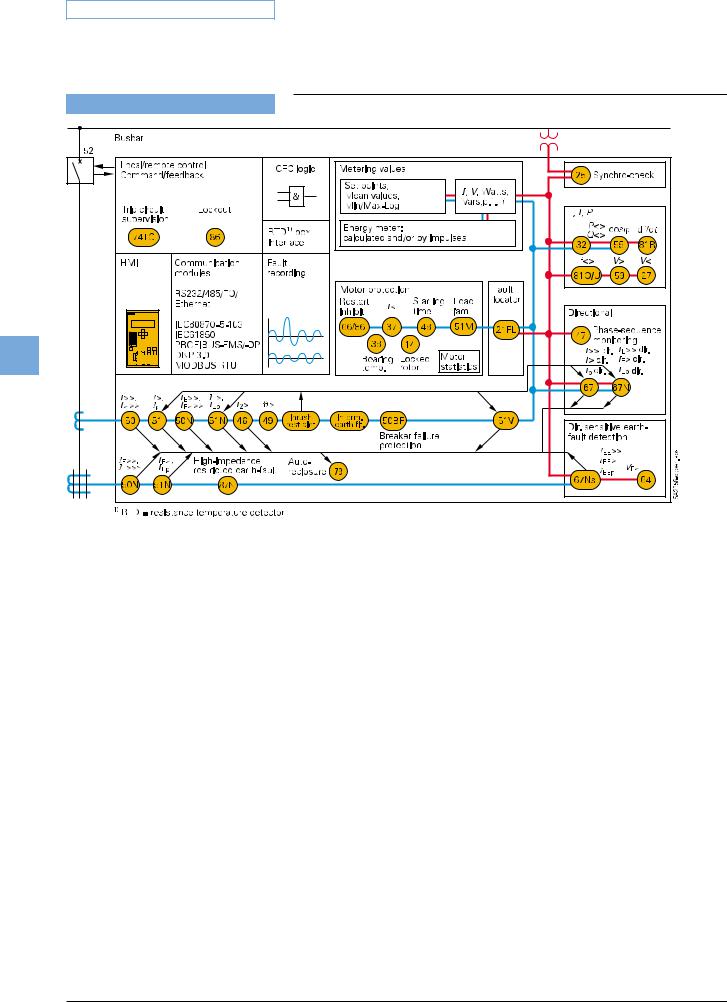
5 Overcurrent Protection / 7SJ62 |
Application |
5 |
Fig. 5/98 Function diagram
The SIPROTEC 4 7SJ62 unit is a numerical protection relay that also performs control and monitoring functions and therefore supports the user in cost-effective power system management, and ensures reliable supply of electric power to the customers. Local operation has been designed according to ergonomic criteria. A large, easy-to- read display was a major design aim.
Control
The integrated control function permits control of disconnect devices, earthing switches or circuit-breakers via the integrated operator panel, binary inputs, DIGSI 4 or the control and protection system (e.g. SICAM). A full range of command processing functions is provided.
Programmable logic
The integrated logic characteristics (CFC) allow the user to implement their own functions for automation of switchgear (interlocking) or a substation via a graphic user interface. The user can also generate user-defined messages.
Line protection
The 7SJ62 units can be used for line protection of high and medium-voltage networks with earthed (grounded), lowresistance earthed, isolated or compensated neutral point.
Synchro-check
In order to connect two components of a power system, the relay provides a synchrocheck function which verifies that switching ON does not endanger the stability of the power system.
Motor protection
When protecting motors, the 7SJ62 relay is suitable for asynchronous machines of all sizes.
Transformer protection
The relay performs all functions of backup protection supplementary to transformer differential protection. The inrush suppression effectively prevents tripping by inrush currents.
The high-impedance restricted earth-fault protection detects short-circuits and insulation faults on the transformer.
Backup protection
The 7SJ62can be used universally for backup protection.
Flexible protection functions
By configuring a connection between a standard protection logic and any measured or derived quantity, the functional scope of the relays can be easily expanded by up to 20 protection stages or protection functions.
Metering values
Extensive measured values, limit values and metered values permit improved system management.
5/106 |
Siemens SIP · 2008 |

5 Overcurrent Protection / 7SJ62
Application
ANSI No. |
IEC |
Protection functions |
|
|
50, 50N |
I>, I>>, I>>>, IE>, IE>>, IE>>> |
Definite time-overcurrent protection (phase/neutral) |
|
|
|
|
|
|
|
51, 51V, 51N |
Ip, IEp |
Inverse time-overcurrent protection (phase/neutral), phase function with voltage-dependent option |
|
|
|
|
|
|
|
67, 67N |
Idir>, Idir>>, Ip dir |
Directional time-overcurrent protection (definite/inverse, phase/neutral), |
|
|
|
IEdir>, IEdir>>, IEp dir |
Directional comparison protection |
|
|
|
|
|
|
|
67Ns/50Ns |
IEE>, IEE>>, IEEp |
Directional/non-directional sensitive earth-fault detection |
|
|
|
|
|
|
|
– |
|
Cold load pick-up (dynamic setting change) |
|
|
|
|
|
|
|
59N/64 |
VE, V0> |
Displacement voltage, zero-sequence voltage |
|
|
|
|
|
|
|
– |
IIE> |
Intermittent earth fault |
|
|
|
|
|
|
|
87N |
|
High-impedance restricted earth-fault protection |
|
|
|
|
|||
|
|
|
|
5 |
50BF |
|
Breaker failure protection |
||
|
|
|||
|
|
|
|
|
79 |
|
Auto-reclosure |
|
|
|
|
|
|
|
25 |
|
Synchro-check |
|
|
|
|
|
|
|
46 |
I2> |
Phase-balance current protection (negative-sequence protection) |
|
|
|
|
|
|
|
47 |
V2>, phase-sequence |
Unbalance-voltage protection and/or phase-sequence monitoring |
|
|
|
|
|
|
|
49 |
ϑ> |
Thermal overload protection |
|
|
|
|
|
|
|
48 |
|
Starting time supervision |
|
|
|
|
|
|
|
51M |
|
Load jam protection |
|
|
|
|
|
|
|
14 |
|
Locked rotor protection |
|
|
|
|
|
|
|
66/86 |
|
Restart inhibit |
|
|
|
|
|
|
|
37 |
I< |
Undercurrent monitoring |
|
|
|
|
|
|
|
38 |
|
Temperature monitoring via external device (RTD-box), e.g. bearing temperature monitoring |
|
|
|
|
|
|
|
27, 59 |
V<, V> |
Undervoltage/overvoltage protection |
|
|
|
|
|
|
|
32 |
P<>, Q<> |
Reverse-power, forward-power protection |
|
|
|
|
|
|
|
55 |
cos ϕ |
Power factor protection |
|
|
|
|
|
|
|
81O/U |
f>, f< |
Overfrequency/underfrequency protection |
|
|
|
|
|
|
|
81R |
df/dt |
Rate-of-frequency-change protection |
|
|
|
|
|
|
|
21FL |
|
Fault locator |
|
|
|
|
|
|
|
Siemens SIP · 2008 |
5/107 |
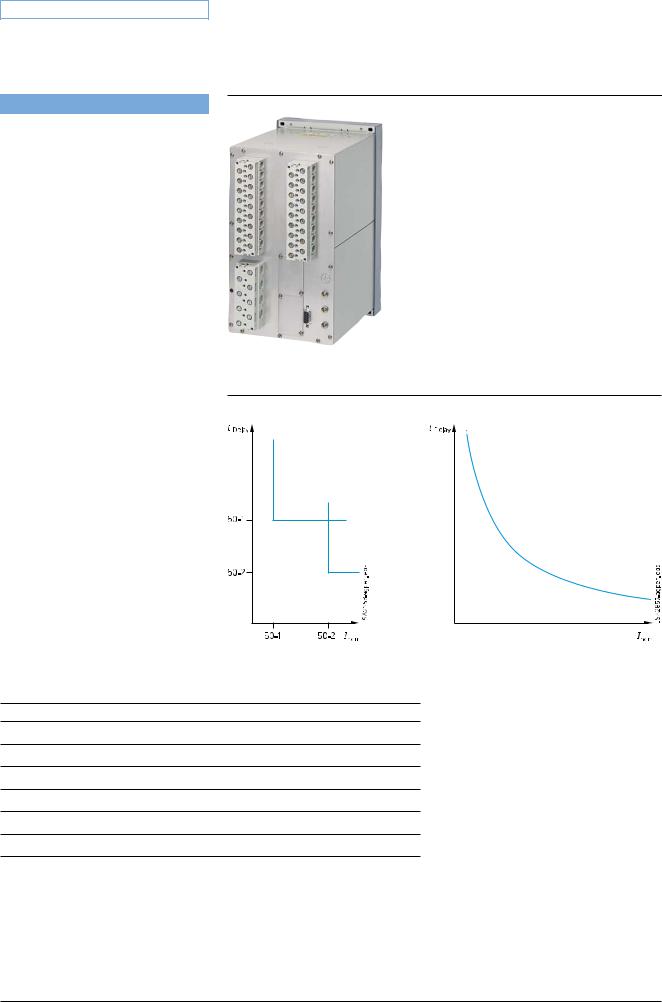
5 Overcurrent Protection / 7SJ62
Construction
|
|
Connection techniques and |
|
|
housing with many advantages |
|
|
1/3-rack sizes is the available housing |
|
|
width of the 7SJ62 relays, referred to a 19” |
|
|
module frame system. This means that |
|
|
previous models can always be replaced. |
|
|
The height is a uniform 244 mm for flush- |
|
|
mounting housings and 266 mm for sur- |
|
|
face-mounting housing. All cables can be |
|
|
connected with or without ring lugs. |
|
|
In the case of surface mounting on a panel, |
|
|
the connection terminals are located above |
|
|
and below in the form of screw-type termi- |
|
|
nals. The communication interfaces are |
|
|
located in a sloped case at the top and bot- |
5 |
|
tom of the housing. |
|
|
|
|
|
|
|
|
Protection functions |
|
|
Time-overcurrent protection |
|
|
(ANSI 50, 50N, 51, 51V, 51N) |
|
|
This function is based on the phase- |
|
|
selective measurement of the three phase |
|
|
currents and the earth current (four trans- |
|
|
formers). Three definite-time overcurrent |
|
|
protection elements (DMT) exist both for |
|
|
the phases and for the earth. The current |
|
|
threshold and the delay time can be set |
|
|
within a wide range. In addition, inverse- |
|
|
time overcurrent protection characteristics |
|
|
(IDMTL) can be activated. |
|
|
The inverse-time function provides – as |
|
|
an option – voltage-restraint or voltage- |
|
|
controlled operating modes. |
|
|
Available inverse-time characteristics |
|
|
Characteristics acc. to |
|
|
Inverse |
|
|
Short inverse |
|
|
Long inverse |
|
|
Moderately inverse |
|
|
Very inverse |
|
|
Extremely inverse |
|
|
Reset characteristics |
|
|
For easier time coordination with |
|
|
electromechanical relays, reset characte- |
|
|
ristics according to ANSI C37.112 and |
|
|
IEC 60255-3 /BS 142 standards are applied. |
|
|
When using the reset characteristic (disk |
LSP2099-afpen.eps
Fig. 5/99 Rear view with screw-type terminals
Fig. 5/100 |
Fig. 5/101 |
Definite-time overcurrent protection |
Inverse-time overcurrent protection |
ANSI/IEEE |
IEC 60255-3 |
• |
• |
• |
|
• |
• |
• |
|
• |
• |
• |
• |
emulation), a reset process is initiated after the fault current has disappeared. This reset process corresponds to the reverse movement of the Ferraris disk of an electromechanical relay (thus: disk emulation).
User-definable characteristics
Instead of the predefined time characteristics according to ANSI, tripping characteristics can be defined by the user for phase and earth units separately. Up to 20 current/time value pairs may be programmed. They are set as pairs of numbers or graphically in DIGSI 4.
Inrush restraint
The relay features second harmonic restraint. If the second harmonic is detected during transformer energization, pickup of non-directional and directional normal elements are blocked.
Cold load pickup/dynamic setting change
For directional and non-directional timeovercurrent protection functions the initiation thresholds and tripping times can be switched via binary inputs or by time control.
5/108 |
Siemens SIP · 2008 |

Protection functions
Directional time-overcurrent protection (ANSI 67, 67N)
Directional phase and earth protection are separate functions. They operate in parallel to the non-directional overcurrent elements. Their pickup values and delay times can be set separately. Definite-time and in- verse-time characteristics are offered. The tripping characteristic can be rotated about
± 180 degrees.
By means of voltage memory, directionality can be determined reliably even for close-in (local) faults. If the switching device closes onto a fault and the voltage is too low to determine direction, directionality (directional decision) is made with voltage from the voltage memory. If no voltage exists in the memory, tripping occurs according to the coordination schedule.
For earth protection, users can choose whether the direction is to be determined via zero-sequence system or negative-se- quence system quantities (selectable). Using negative-sequence variables can be advantageous in cases where the zero voltage tends to be very low due to unfavorable zero-sequence impedances.
Directional comparison protection (cross-coupling)
It is used for selective protection of sections fed from two sources with instantaneous tripping, i.e. without the disadvantage of time coordination. The directional comparison protection is suitable if the distances between the protection stations are not significant and pilot wires are available for signal transmission. In addition to the directional comparison protection, the directional coordinated time-overcurrent protection is used for complete selective backup protection. If operated in a closed-circuit connection, an interruption of the transmission line is detected.
(Sensitive) directional earth-fault detection (ANSI 64, 67Ns, 67N)
For isolated-neutral and compensated networks, the direction of power flow in the zero sequence is calculated from the zerosequence current I0 and zero-sequence voltage V0.
5 Overcurrent Protection / 7SJ62
Fig. 5/102
Directional characteristic of the directional time-overcurrent protection
5
Fig. 5/103
Directional determination using cosine measurements for compensated networks
For networks with an isolated neutral, the reactive current component is evaluated; for compensated networks, the active current component or residual resistive current is evaluated. For special network conditions, e.g. high-resistance earthed networks with ohmic-capacitive earth-fault current or low-resistance earthed networks with ohmic-inductive current, the tripping characteristics can be rotated approximately ± 45 degrees.
Two modes of earth-fault direction detection can be implemented: tripping or “signalling only mode”.
It has the following functions:
•TRIP via the displacement voltage VE.
•Two instantaneous elements or one instantaneous plus one user-defined characteristic.
•Each element can be set in forward, reverse, or non-directional.
•The function can also be operated in the insensitive mode as an additional short-circuit protection.
(Sensitive) earth-fault detection (ANSI 50Ns, 51Ns / 50N, 51N)
For high-resistance earthed networks, a sensitive input transformer is connected to a phase-balance neutral current transformer (also called core-balance CT).
The function can also be operated in the insensitive mode as an additional shortcircuit protection.
Siemens SIP · 2008 |
5/109 |
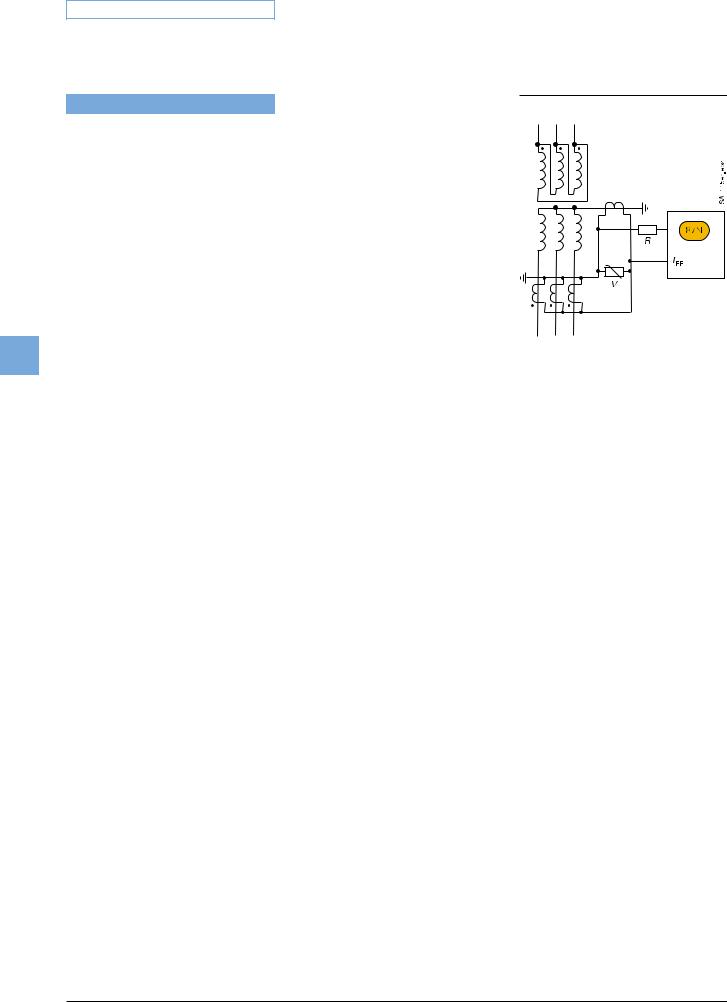
5 Overcurrent Protection / 7SJ62
Protection functions
Intermittent earth-fault protection
Intermittent (re-striking) faults occur due to insulation weaknesses in cables or as a result of water penetrating cable joints. Such faults either simply cease at some stage or develop into lasting short-circuits. During intermittent activity, however, star-point resistors in networks that are impedance-earthed may undergo thermal overloading. The normal earth-fault protection cannot reliably detect and interrupt the current pulses, some of which can be very brief.
The selectivity required with intermittent earth faults is achieved by summating the duration of the individual pulses and by
5 triggering when a (settable) summed time is reached. The response threshold IIE> evaluates the r.m.s. value, referred to one systems period.
Phase-balance current protection (ANSI 46) (Negative-sequence protection)
In line protection, the two-element phasebalance current/negative-sequence protection permits detection on the high side of high-resistance phase-to-phase faults and phase-to-earth faults that are on the low side of a transformer (e.g. with the switch group Dy 5). This provides backup protection for high-resistance faults beyond the transformer.
Breaker failure protection (ANSI 50BF)
If a faulted portion of the electrical circuit is not disconnected upon issuance of a trip command, another command can be initiated using the breaker failure protection which operates the circuit-breaker, e.g. of an upstream (higher-level) protection relay. Breaker failure is detected if, after a trip command, current is still flowing in the faulted circuit. As an option, it is possible to make use of the circuit-breaker position indication.
High-impedance restricted earth-fault protection (ANSI 87N)
The high-impedance measurement principle is an uncomplicated and sensitive method for detecting earth faults, especially on transformers. It can also be applied to motors, generators and reactors when these are operated on an earthed network.
When the high-impedance measurement principle is applied, all current transformers in the protected area are connected in parallel and operated on one common resistor of relatively high R whose voltage is measured (see Fig. 5/104). In the case of 7SJ6 units, the voltage is measured by detecting the current through the (external) resistor R at the sensitive current measurement input IEE. The varistor V serves to limit the voltage in the event of an internal fault. It cuts off the high momentary voltage spikes occurring at transformer saturation. At the same time, this results in smoothing of the voltage without any noteworthy reduction of the average value. If no faults have occurred and in the event of external faults, the system is at equilibrium, and the voltage through the resistor is approximately zero. In the event of internal faults, an imbalance occurs which leads to a voltage and a current flow through the resistor R.
The current transformers must be of the same type and must at least offer a separate core for the high-impedance restricted earth-fault protection. They must in particular have the same transformation ratio and an approximately identical knee-point voltage. They should also demonstrate only minimal measuring errors.
Fig. 5/104 High-impedance restricted earthfault protection
5/110 |
Siemens SIP · 2008 |
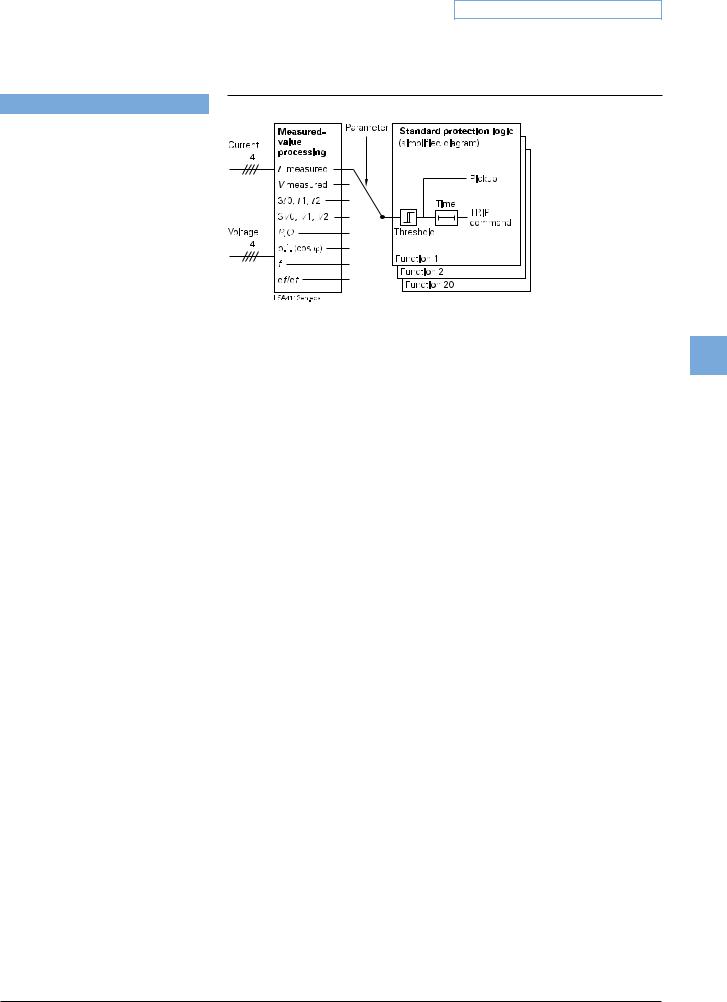
Protection functions
Flexible protection functions
The 7SJ62 units enable the user to easily add on up to 20 protective functions. To this end, parameter definitions are used to link a standard protection logic with any chosen characteristic quantity (measured or derived quantity) (Fig. 5/105). The standard logic consists of the usual protection elements such as the pickup message, the parameter-definable delay time, the TRIP command, a blocking possibility, etc. The mode of operation for current, voltage, power and power factor quantities can be three-phase or single-phase. Almost all quantities can be operated as greater than or less than stages. All stages operate with protection priority.
Protection stages/functions attainable on the basis of the available characteristic quantities:
Function |
ANSI No. |
I>, IE> |
50, 50N |
|
|
V<, V>, VE> |
27, 59, 64 |
|
|
3I0>, I1>, I2>, I2/I1 |
50N, 46 |
3V0>, V1><, V2>< |
59N, 47 |
P><, Q>< |
32 |
|
|
cos ϕ (p.f.)>< |
55 |
|
|
f>< |
81O, 81U |
|
|
df/dt>< |
81R |
|
|
For example, the following can be implemented:
•Reverse power protection (ANSI 32R)
•Rate-of-frequency-change protection (ANSI 81R)
Synchro-check (ANSI 25)
In case of switching ON the circuitbreaker, the units can check whether the two subnetworks are synchronized. Voltage-, frequencyand phase-angle- differences are being checked to determine whether synchronous conditions are existent.
5 Overcurrent Protection / 7SJ62
Fig. 5/105 Flexible protection functions
Auto-reclosure (ANSI 79)
Multiple reclosures can be defined by the user and lockout will occur if a fault is present after the last reclosure. The following functions are possible:
•3-pole ARC for all types of faults
•Separate settings for phase and earth faults
•Multiple ARC, one rapid auto-reclosure (RAR) and up to nine delayed auto-reclosures (DAR)
•Starting of the ARC depends on the trip command selection (e.g. 46, 50, 51, 67)
•Blocking option of the ARC via binary inputs
•ARC can be initiated externally or via CFC
•The directional and non-directional elements can either be blocked or operated non-delayed depending on the autoreclosure cycle
•Dynamic setting change of the directional and non-directional elements can be activated depending on the ready AR
5
Thermal overload protection (ANSI 49)
For protecting cables and transformers, an overload protection with an integrated pre-warning element for temperature and current can be applied. The temperature is calculated using a thermal homogeneousbody model (according to IEC 60255-8), which takes account both of the energy en-
tering the equipment and the energy losses. The calculated temperature is constantly adjusted accordingly. Thus, account is taken of the previous load and the load fluctuations.
For thermal protection of motors (especially the stator) a further time constant can be set so that the thermal ratios can be detected correctly while the motor is rotating and when it is stopped. The ambient temperature or the temperature of the coolant can be detected serially via an external temperature monitoring box (resis- tance-temperature detector box, also called RTDbox). The thermal replica of the overload function is automatically adapted to the ambient conditions. If there is no RTD-box it is assumed that the ambient temperatures are constant.
Settable dropout delay times
If the devices are used in parallel with electromechanical relays in networks with intermittent faults, the long dropout times of the electromechanical devices (several hundred milliseconds) can lead to problems in terms of time grading. Clean time grading is only possible if the dropout time is approximately the same. This is why the parameter of dropout times can be defined for certain functions such as time-over- current protection, earth short-circuit and phase-balance current protection.
Siemens SIP · 2008 |
5/111 |

5 Overcurrent Protection / 7SJ62
Protection functions
Motor protection Restart inhibit (ANSI 66/86)
If a motor is started up too many times in succession, the rotor can be subject to thermal overload, especially the upper edges of the bars. The rotor temperature is calculated from the stator current. The reclosing lockout only permits start-up of the motor if the rotor has sufficient thermal reserves for a complete start-up (see Fig. 5/106).
Emergency start-up
This function disables the reclosing lockout via a binary input by storing the state of the thermal replica as long as the binary
5 input is active. It is also possible to reset the thermal replica to zero.
Temperature monitoring (ANSI 38)
Up to two temperature monitoring boxes with a total of 12 measuring sensors can be used for temperature monitoring and detection by the protection relay. The thermal status of motors, generators and transformers can be monitored with this device. Additionally, the temperature of the bearings of rotating machines are monitored for limit value violation. The temperatures are being measured with the help of temperature detectors at various locations of the device to be protected. This data is transmitted to the protection relay via one or two temperature monitoring boxes (see “Accessories”, page 5/137).
Starting time supervision (ANSI 48/14)
Starting time supervision protects the motor against long unwanted start-ups that might occur in the event of excessive load torque or excessive voltage drops within the motor, or if the rotor is locked. Rotor temperature is calculated from measured stator current. The tripping time is calculated according to the following equation:
for I > IMOTOR START
|
I A |
2 |
|
t = |
|
|
TA |
|
|||
|
I |
|
|
I |
= Actual current flowing |
IMOTOR START |
= Pickup current to detect a motor |
|
start |
t |
= Tripping time |
IA |
= Rated motor starting current |
TA |
= Tripping time at rated motor |
|
starting current (2 times, for |
|
warm and cold motor) |
Fig. 5/106
The characteristic (equation) can be adapted optimally to the state of the motor by applying different tripping times TA in dependence of either cold or warm motor state. For differentiation of the motor state the thermal model of the rotor is applied.
If the trip time is rated according to the above formula, even a prolonged start-up and reduced voltage (and reduced start-up current) will be evaluated correctly. The tripping time is inverse (current dependent).
A binary signal is set by a speed sensor to detect a blocked rotor. An instantaneous tripping is effected.
Load jam protection (ANSI 51M)
Sudden high loads can cause slowing down and blocking of the motor and mechanical damages. The rise of current due to a load jam is being monitored by this function (alarm and tripping).
The overload protection function is too slow and therefore not suitable under these circumstances.
Phase-balance current protection (ANSI 46) (Negative-sequence protection)
The negative-sequence / phase-balance current protection detects a phase failure or load unbalance due to network asymmetry and protects the rotor from impermissible temperature rise.
Undercurrent monitoring (ANSI 37)
With this function, a sudden drop in current, which can occur due to a reduced motor load, is detected. This may be due to
shaft breakage, no-load operation of pumps or fan failure.
Motor statistics
Essential information on start-up of the motor (duration, current, voltage) and general information on number of starts, total operating time, total down time, etc. are saved as statistics in the device.
Voltage protection
Overvoltage protection (ANSI 59)
The two-element overvoltage protection detects unwanted network and machine overvoltage conditions. The function can operate either with phase-to-phase, phase-to-earth, positive phase-sequence or negative phase-sequence system voltage. Three-phase and single-phase connections are possible.
Undervoltage protection (ANSI 27)
The two-element undervoltage protection provides protection against dangerous voltage drops (especially for electric machines). Applications include the isolation of generators or motors from the network to avoid undesired operating states and a possible loss of stability. Proper operating conditions of electrical machines are best evaluated with the positive-sequence quantities. The protection function is active over a wide frequency range (45 to 55, 55 to 65 Hz)1). Even when falling below this frequency range the function continues to work, however, with a greater tolerance band.
1)The 45 to 55, 55 to 65 Hz range is available for fN = 50/60 Hz.
5/112 |
Siemens SIP · 2008 |
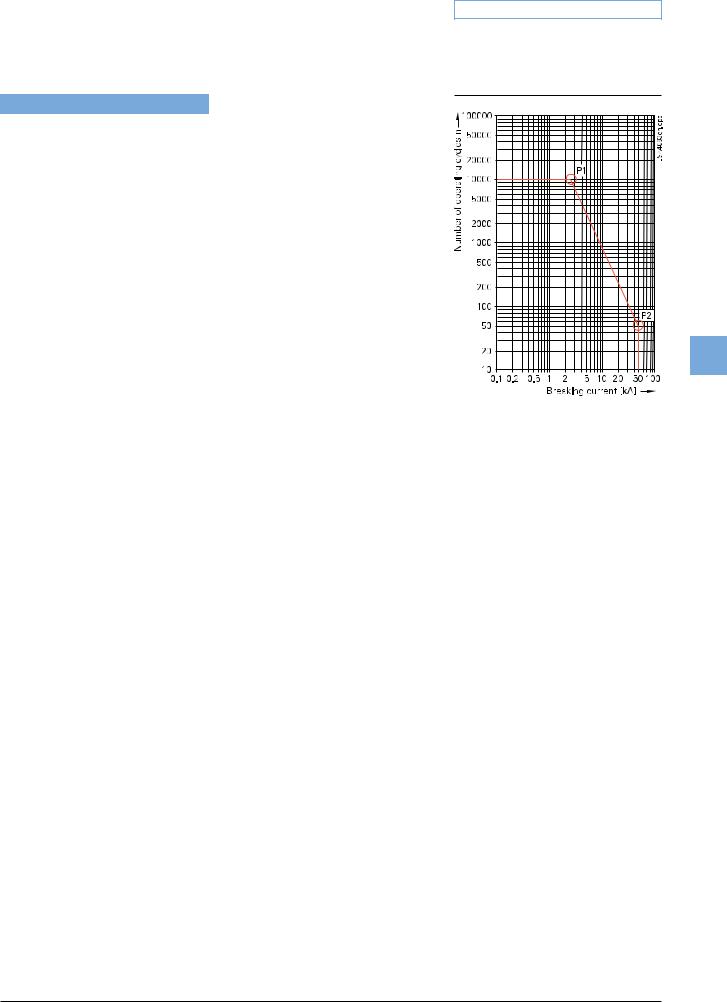
Protection functions/Functions
The function can operate either with phase-to-phase, phase-to-earth or positive phase-sequence voltage and can be monitored with a current criterion. Three-phase and single-phase connections are possible.
Frequency protection (ANSI 81O/U)
Frequency protection can be used for overfrequency and underfrequency protection. Electric machines and parts of the system are protected from unwanted speed deviations. Unwanted frequency changes in the network can be detected and the load can be removed at a specified frequency setting.
Frequency protection can be used over a wide frequency range (40 to 60, 50 to
70 Hz)1). There are four elements (selectable as overfrequency or underfrequency) and each element can be delayed separately. Blocking of the frequency protection can be performed if using a binary input or by using an undervoltage element.
Fault locator (ANSI 21FL)
The integrated fault locator calculates the fault impedance and the distance-to-fault. The results are displayed in Ω, kilometers (miles) and in percent of the line length.
Circuit-breaker wear monitoring
Methods for determining circuit-breaker contact wear or the remaining service life of a circuit-breaker (CB) allow CB maintenance intervals to be aligned to their actual degree of wear. The benefit lies in reduced maintenance costs.
There is no mathematically exact method of calculating the wear or the remaining service life of circuit-breakers that takes into account the arc-chamber's physical conditions when the CB opens. This is why various methods of determining CB wear have evolved which reflect the different operator philosophies. To do justice to these, the devices offer several methods:
• I
I
•Σ I x, with x = 1... 3
•Σ i 2t
The devices additionally offer a new method for determining the remaining service life:
• Two-point method
1)The 40 to 60, 50 to 70 Hz range is available for fN= 50/60 Hz
5 Overcurrent Protection / 7SJ62
The CB manufacturers double-logarithmic switching cycle diagram (see Fig. 5/107) and the breaking current at the time of contact opening serve as the basis for this method. After CB opening, the two-point method calculates the number of still possible switching cycles. To this end, the two points P1 and P2 only have to be set on the device. These are specified in the CB's technical data.
All of these methods are phase-selective and a limit value can be set in order to obtain an alarm if the actual value falls below or exceeds the limit value during determination of the remaining service life.
Customized functions (ANSI 32, 51V, 55, etc.)
Additional functions, which are not time critical, can be implemented via the CFC using measured values. Typical functions include reverse power, voltage controlled overcurrent, phase angle detection, and zero-sequence voltage detection.
Commissioning
Commissioning could hardly be easier and is fully supported by DIGSI 4. The status of the binary inputs can be read individually and the state of the binary outputs can be set individually. The operation of switching elements (circuit-breakers, disconnect devices) can be checked using the switching functions of the bay controller. The analog measured values are represented as wide-ranging operational measured values. To prevent transmission of information to the control center during maintenance, the bay controller communications can be disabled to prevent unnecessary data from being transmitted. During commissioning, all indications with test marking for test purposes can be connected to a control and protection system.
Test operation
During commissioning, all indications can be passed to an automatic control system for test purposes.
Control and automatic functions
Control
In addition to the protection functions, the SIPROTEC 4 units also support all control and monitoring functions that are required for operating medium-voltage or highvoltage substations.
The main application is reliable control of switching and other processes.
The status of primary equipment or auxiliary devices can be obtained from auxiliary
5
Fig. 5/107 CB switching cycle diagram
contacts and communicated to the 7SJ62 via binary inputs. Therefore it is possible to detect and indicate both the OPEN and CLOSED position or a fault or intermediate circuit-breaker or auxiliary contact position.
The switchgear or circuit-breaker can be controlled via:
–integrated operator panel
–binary inputs
–substation control and protection system
–DIGSI 4
Automation / user-defined logic
With integrated logic, the user can set, via a graphic interface (CFC), specific functions for the automation of switchgear or substation. Functions are activated via function keys, binary input or via communication interface.
Switching authority
Switching authority is determined according to parameters, communication or by key-operated switch (when available).
If a source is set to “LOCAL”, only local switching operations are possible. The following sequence of switching authority is laid down: “LOCAL”; DIGSI PC program, “REMOTE”.
Command processing
All the functionality of command processing is offered. This includes the processing of single and double commands with or without feedback, sophisticated monitoring of the control hardware and software, checking of the external process, control
Siemens SIP · 2008 |
5/113 |
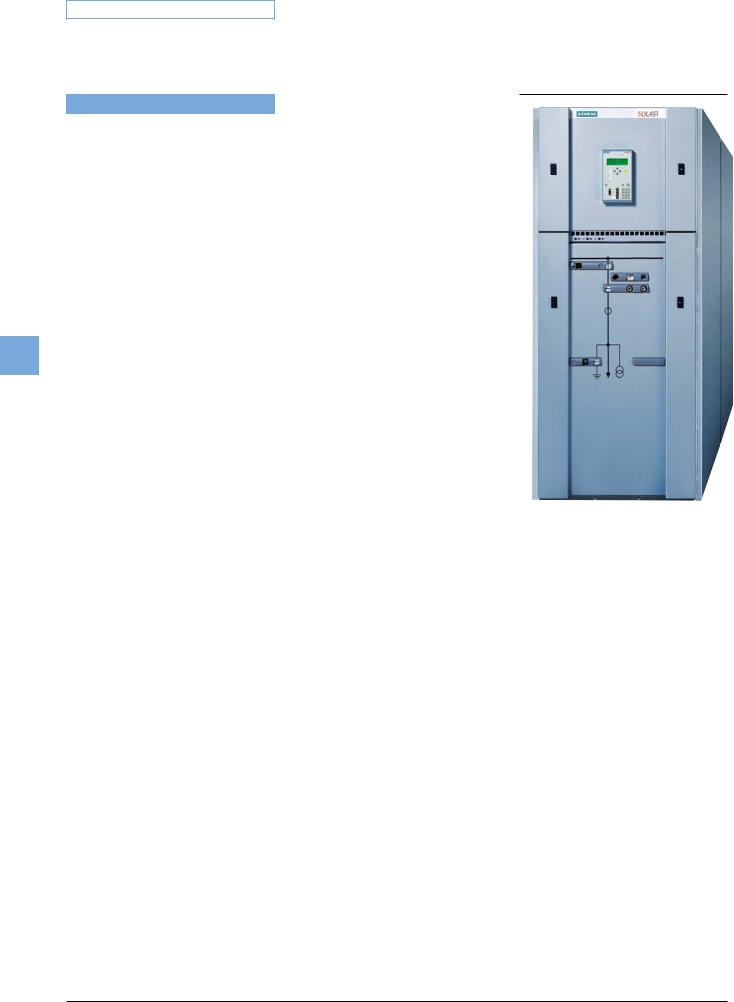
5 Overcurrent Protection / 7SJ62
Functions
actions using functions such as runtime monitoring and automatic command termination after output. Here are some typical applications:
•Single and double commands using 1, 1 plus 1 common or 2 trip contacts
•User-definable bay interlocks
•Operating sequences combining several switching operations such as control of circuit-breakers, disconnectors and earthing switches
•Triggering of switching operations, indications or alarm by combination with existing information
5 Assignment of feedback to command
The positions of the circuit-breaker or switching devices and transformer taps are acquired by feedback. These indication inputs are logically assigned to the corresponding command outputs. The unit can therefore distinguish whether the indication change is a consequence of switching operation or whether it is a spontaneous change of state.
Chatter disable
Chatter disable feature evaluates whether, in a configured period of time, the number of status changes of indication input exceeds a specified figure. If exceeded, the indication input is blocked for a certain period, so that the event list will not record excessive operations.
Indication filtering and delay
Binary indications can be filtered or delayed.
Filtering serves to suppress brief changes in potential at the indication input. The indication is passed on only if the indication voltage is still present after a set period of time. In the event of indication delay, there is a wait for a preset time. The information is passed on only if the indication voltage is still present after this time.
Indication derivation
A further indication (or a command) can be derived from an existing indication. Group indications can also be formed. The volume of information to the system interface can thus be reduced and restricted to the most important signals.
Switchgear cubicles for high/medium voltage
All units are designed specifically to meet the requirements of high/medium-voltage applications.
In general, no separate measuring instruments (e.g., for current, voltage, frequency, …) or additional control components are necessary.
Measured values
The r.m.s. values are calculated from the acquired current and voltage along with the power factor, frequency, active and reactive power. The following functions are available for measured value processing:
•Currents IL1, IL2, IL3, IE, IEE (67Ns)
•Voltages VL1, VL2, VL3, VL1L2, VL2L3, VL3L1
•Symmetrical components
I1, I2, 3I0; V1, V2, V0
•Power Watts, Vars, VA/P, Q, S (P, Q: total and phase selective)
•Power factor (cos ϕ), (total and phase selective)
•Frequency
•Energy ± kWh, ± kVarh, forward and reverse power flow
•Mean as well as minimum and maximum current and voltage values
•Operating hours counter
•Mean operating temperature of overload function
•Limit value monitoring
Limit values are monitored using programmable logic in the CFC. Commands can be derived from this limit value indication.
•Zero suppression
In a certain range of very low measured values, the value is set to zero to suppress interference.
Metered values
For internal metering, the unit can calculate an energy metered value from the measured current and voltage values. If an external meter with a metering pulse output is available, the SIPROTEC 4 unit can obtain and process metering pulses via an indication input.
The metered values can be displayed and passed on to a control center as an accumulation with reset. A distinction is made between forward, reverse, active and reactive energy.
Fig. 5/108
NXAIR panel (air-insulated)
LSP2077f.eps
5/114 |
Siemens SIP · 2008 |
